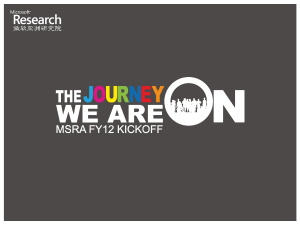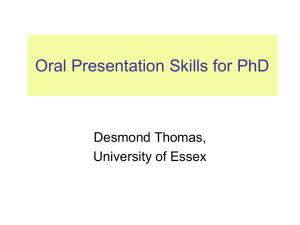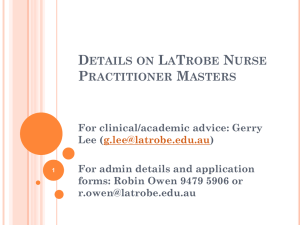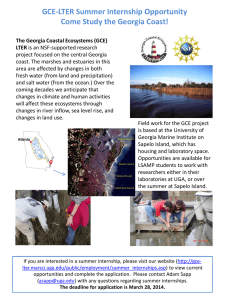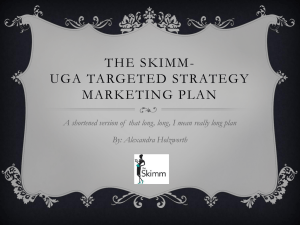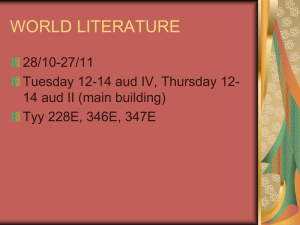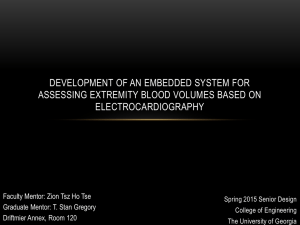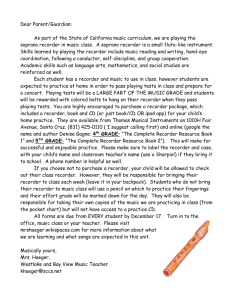- Medical Robotics Lab
advertisement
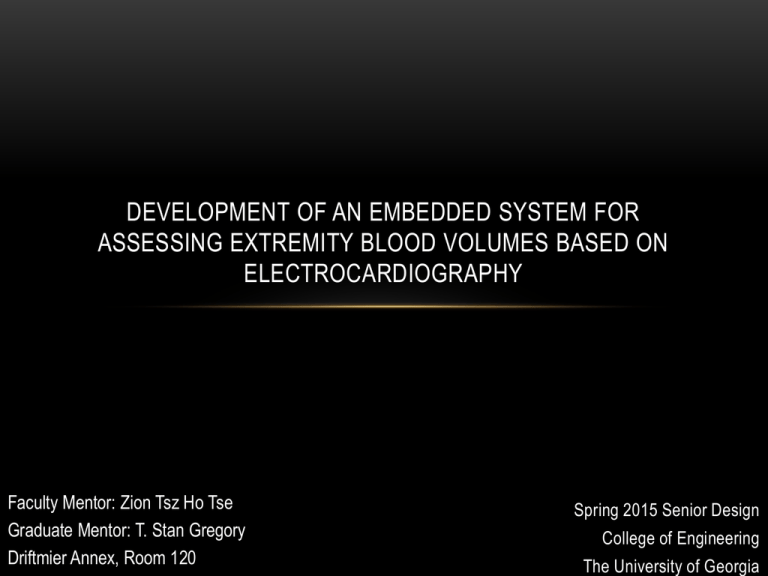
DEVELOPMENT OF AN EMBEDDED SYSTEM FOR ASSESSING EXTREMITY BLOOD VOLUMES BASED ON ELECTROCARDIOGRAPHY Faculty Mentor: Zion Tsz Ho Tse Graduate Mentor: T. Stan Gregory Driftmier Annex, Room 120 Spring 2015 Senior Design College of Engineering The University of Georgia WHAT WILL YOU GAIN FROM THIS COURSE? • Learn to practice engineering rather than theory • Academic + scientific writing skills • Teamwork • Circuit design for biomedical applications • Rapid prototyping techniques • Smartphone interfaces • FDA approval applications + 501k premarket • + More INTRODUCTION • Contact Information • Zion Tsz Ho Tse (ziontse@uga.edu) • T. Stan Gregory (stang@uga.edu) • Driftmier Annex Room 120 • Course Website • Grade Postings, Download Lecture Material • http://www.medicalrobotics.engr.uga.edu/seniordesign/mhd/ • Weekly Meetings • Monday 4PM (tentative) • Mandatory Attendance GRADING SCHEME Item Percentage 1 Proper documentation of work (engineering notebooks) 20% 2 Group participation, (5-10 hours per week in lab) 20% 3 Written reports (interim and final reports) 20% 4 Deliverables (Milestone Completion) 20% 5 Oral presentations 10% 6 Quality and professionalism in work content and group 10% participation PROFESSIONAL CONDUCT You should function as if you were an employee reporting to your mentors/advisors. A brief list of items to consider is listed below: • Apply proper tools and engineering design methodology thoroughly, accurately, and honestly. • During oral presentations, dress neatly and appropriately for the occasion. • Write clearly and type all reports; include a title page and page numbers. • Drawings/figures should be neat, properly labeled/titled, and scaled. • Keep a copy of everything that you provide to group members and instructors. • Date all reports/correspondences. • Appropriately acknowledge everyone who assisted you in your design project/efforts. • Maintain a level of honesty with colleagues, clients, and faculty. MILESTONES (TENTATIVE) Due Date Milestone Description 1 Jan 19 Breadboard fingertip ECG recorder using INA 128 2 Feb 2 Interface recorder and send data to PC/Smartphone 3 Feb 16 Develop smartphone case, assemble ECG recorder in case 4 Feb 26 Interim report and colleague evaluations due 5 Mar 2 Oral Presentation I 6 Mar 30 Investigate MHD signal using ECG recorder and Static Magnet, Prelim results 7 April 20 Integrate magnet into smartphone casing, finalize MHD sensor 8 April 27 Final report, colleague evaluation, and Oral Presentation II ORAL PRESENTATIONS AND REPORTS • • Oral presentations 2 total • In preparation for mandatory presentations scheduled by Dr. Pidaparti • 15-20 minutes for presentations, 5-10 minutes for Q&A • Should detail standard report sections (significance, introduction, methods, etc…) Engineering Reports 2 (interim and final) • Neat and detailed drawings, appropriately detailed • Standard sections: (1) Title page; (2) Introduction; (3) Background; (4) Methods; (5) Results; (6) Discussion; (7) Conclusions. • IEEE paper format (8-10 pages) http://www.ieee-asme-mechatronics.org/ • EndNote (http://guides.libs.uga.edu/content.php?pid=500113&sid=4114111) • Draft iterations Your graduate mentor will go through several draft iterations with you prior to each due date to refine your writing over the course of the semester. SHORT HOMEWORK ASSIGNMENT • Introduction to 3-D Printing • Each member should print 1 small item during session today. • Start the job (1 job all parts), then you are free to go!!! • What is in store for Monday??? • 1st weekly meeting • More Project Details • Introduction to Milestone I QUESTIONS???
